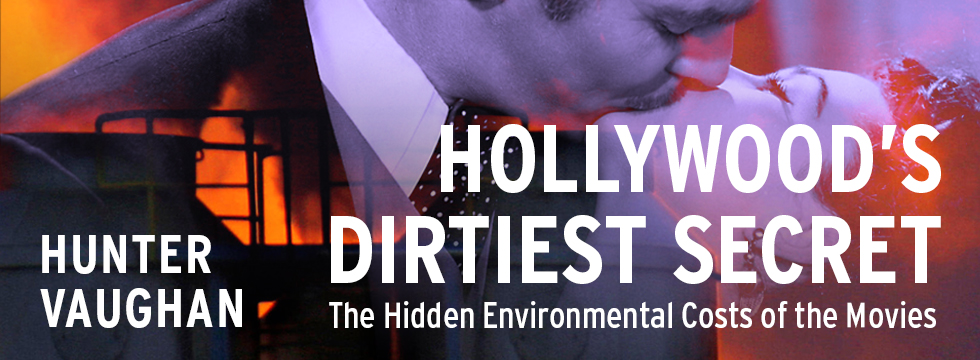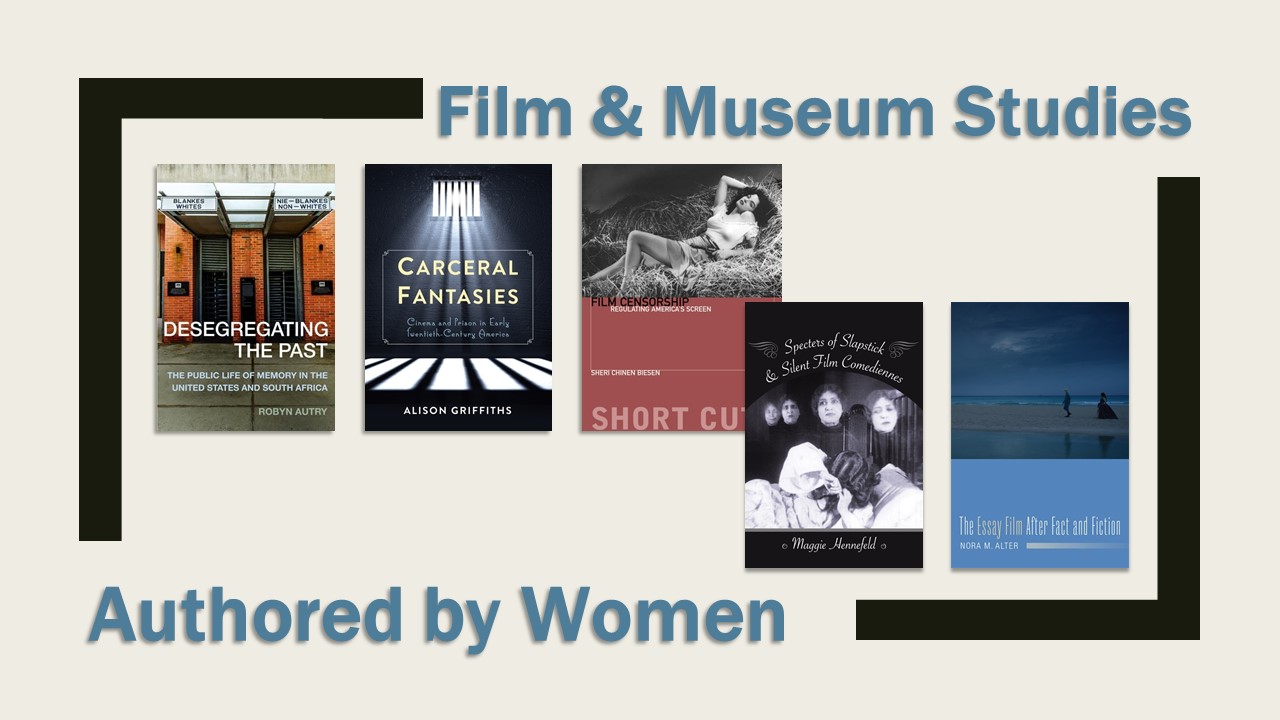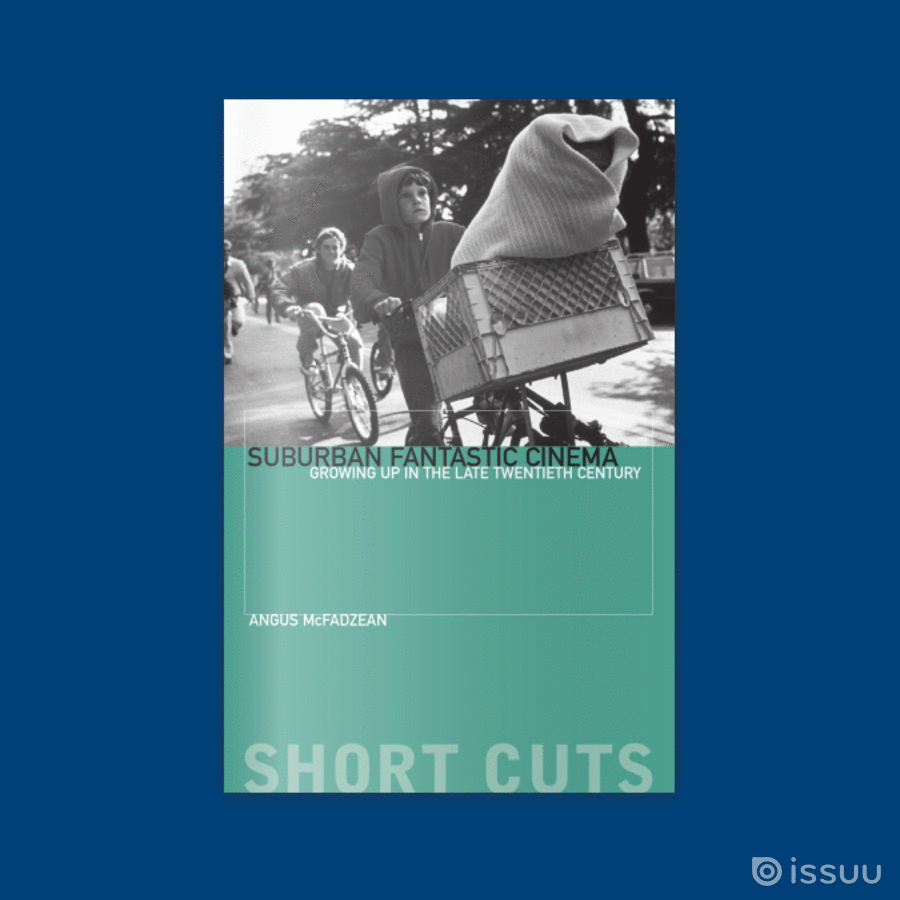The Resurgence of Nostalgia: How Suburban Fantastic Cinema Dominated the Late 2010s
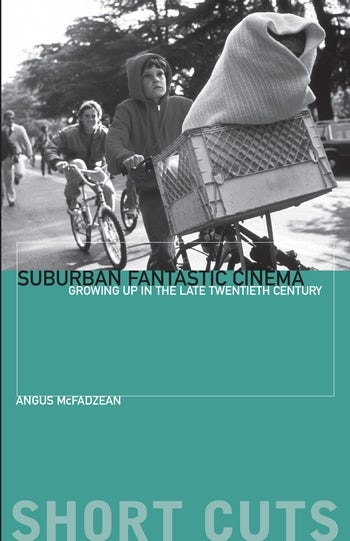
“A master class in film genre criticism. It offers careful and close analysis of the films in its corpus, and is a great example of how much meaning is latent in popular films that are sometimes dismissed as merely juvenile or crassly commercial.”
~Bradley Schauer, University of Arizona
Merry Christmas! For some, it’s a holiday tradition to spend Christmas day at the movies. But, do you ever stop to think about how the movie you watch today may influence the movies or streamed shows of the future? In today’s posts, Angus McFadzean, author of Suburban Fantastic Cinema: Growing Up in the Late Twentieth Century, invites us to delve into legacy films such as E.T. and the Goonies and the impact they have on contemporary works of suburban fantastic stories.
• • • • • •
This summer has seen the release of the third season of one of Netflix’s biggest shows, Stranger Things. According to released figures, over 64 million people streamed it in its first week.¹ The popularity of the show and its characters has turned into a merchandising bonanza of spin-off novels, comic books, branded clothing and themed experiences.
There’s no doubt that the show has become a phenomenon in itself, yet it consciously models itself on stories that Hollywood television and cinema has been telling for about forty years now. These are what I call suburban fantastic stories. They are stories in which pre-teen or teenage boys living within the suburbs are called upon to confront a disruptive fantastic force – ghosts, aliens, vampires, gremlins and malevolent robots. These stories emerged through the work of Steven Spielberg, Joe Dante, Robert Zemeckis and Chris Columbus in the 1980s and have gone on to inspire other filmmakers up to the present day.
In my book Suburban Fantastic Cinema: Growing Up in the Late Twentieth Century, I explore the legacy of these films, highlighting key instances such as E.T.: The Extra-Terrestrial, Gremlins, The Goonies, Back to the Future, and Explorers. One of the most interesting elements in suburban fantastic cinema is how these films evolve through the 1990s and 2000s. Contemporary culture is fixated on reproducing the feel of Amblin films in the 1980s, and this ignores the great legacy of films such as Jumanji, The Iron Giant and Small Soldiers which arguably are just as important to this sub-genre.
The Duffer Brothers have borrowed freely from all of them to create Stranger Things. Sometimes they clearly evoke certain shots and narrative moments, as in this shot that clearly evokes Elliott’s first encounter with E.T.²
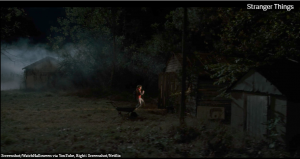
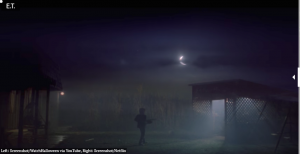
In other places, Stranger Things shows how influenced the main protagonists are by the pop culture media around them. Jonathan (Charlie Heaton) has posters of The Evil Dead and. Will (Noah Schapp) wants to see Poltergeist. And Eleven (Millie Bobby Brown) watches a Coca-Cola advert and clip from He-Man and absorbs them as evidence of the new world she has entered. Suburban fantastic cinema commonly includes a scene where the main protagonist watches something on television that resembles the supernatural or science-fictional encounter that he is about to experience. These scenes suggest some greater connection between the dreams of the protagonist and the intrusions of fantastical beings into their world, as if the stories are playing out fantasies of peril and heroism, common to bored suburban children.
By now the Duffer Brothers are not the only ones who are taking advantage of a renewed interest in the suburban fantastic. Many other filmmakers are returning to this sub-genre and imitating the films of their own childhood. Eli Roth has made The House with Clocks in the Wall. Jumanji has been resurrected as a franchise with Dwayne Johnson. And Goosebumps has become a popular horror-comedy. Other independent film-makers – David Lowery, Jeff Nichols – have offered their own idiosyncratic takes on these films.
It’s likely that suburban fantastic cinema has a long future ahead of it as other filmmakers explore the strange and unsettling experience of growing up in a contemporary mediatised pop cultural environment.
Explore more Wallflower books and save 30% when you order from our website by using coupon code: CUP30 at checkout!

